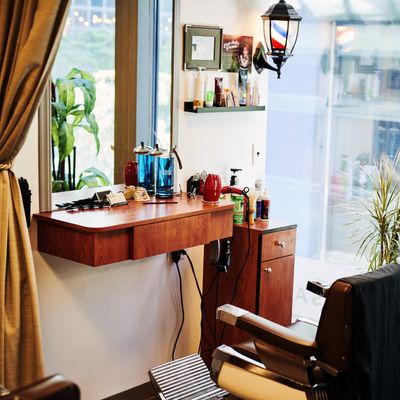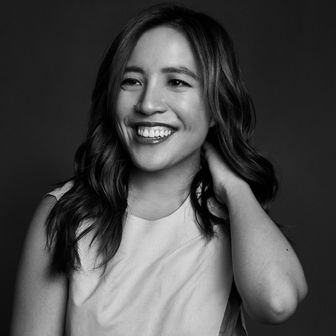
After being closed for close to three months due to COVID-19, hair salons across New York are permitted to open their doors this week. Salons and barbershops fall under phase two of Governor Cuomo’s reopening plan. Hairstylists and colorists have been anxiously waiting to see customers again (possibly because they witnessed so many at-home color mishaps on Instagram), and are prepared with increased safety protocols and procedures. Major salons like Sally Hershberger, Rita Hazan, Warren Tricomi, and David Mallett are all ready for business. Here’s what to expect, and how you should prepare for your visit.
Don’t Bring a Lot of Stuff
To limit exposure, many salons are not allowing visitors into the space who don’t have an appointment. That includes pets, children (unless they are also getting a haircut), any additional guests who just want to hang, and food-delivery workers (you won’t be able to eat inside either). “While we do love seeing our clients’ friends and families, we are requiring that clients come alone,” says Sally Hershberger.
Bring limited personal belongings. For example, Warren Tricomi salon is not permitting purses, bags, and drinks. “It’s a point of contamination. If someone is coming from work with their laptop and bag, we will give them a plastic bag to put it in, but we are trying to minimize exposure,” says Edward Tricomi. Hershberger agrees, “Leaving anything unnecessary at home or in the car will expedite the process and keep everyone safe.”
Expect Everyone to Wear a Mask
You and your stylist will wear a mask for the entirety of your appointment. (In many cases, your stylist might also wear a face shield. A face shield is great because it serves as an additional buffer against respiratory droplets.) Services that require mask removal (like beard trims) are not permitted.
Epidemiologists agree that masks are your (and your stylist’s) greatest tool in mitigating COVID-19 risk. Masks are the reason there was no COVID-19 outbreak after two hairstylists at a hair salon in Missouri tested positive (the stylists and their clients wore a mix of cloth and disposable masks). “The averted outbreak from the Missouri hair salon is evidence that masks work, and this will be the most important intervention in any close, indoor spaces,” says Abraar Karan, an internal medicine doctor at Brigham and Women’s Hospital and Harvard Medical School.
Your chairs might even be wearing masks, sort of. Some hair salons will have plastic partitions between chairs. Georgie Downie, co-owner at Kennaland Salon in Brooklyn, explains that “all stations and basins are six feet apart and separated by eight-foot-high framed wire glass partitions.”
Do Pack Extra Masks
Certain procedures might require you to switch masks. If you are doing a lengthy service, such as getting your roots perfectly platinum again, hair dye might get on your mask. Also, washing your hair around a mask’s ear loops can get kind of tricky, so bring another in case it gets wet.
Don’t Bring Cash
Most salons will only be doing cashless transactions. If you’d like to tip your stylist in cash, that is possible, but many — like the David Mallett salon — will offer Venmo as an option.
Book Your Appointment Early
Most salons won’t be able to accommodate walk-in appointments (this may not be the case at your local barbershop). Under law, hair salons will be operating at 50 percent capacity to space out customers, so there will be less availability. For example, at the Hair Rules salon, founder Anthony Dickey says there will only be one stylist and colorist on-site per day. In case of an infection, electronic appointment books also make for better record keeping.
Expect Everything to Be Sanitized
Strict appointment times are also necessary because there will be a longer turnaround time between customers. Stylists will disinfect and thoroughly clean chairs between each customer. Waiting rooms and magazines won’t exist; you will not be able to linger before or after your appointment. At many salons, stylists will undergo daily temperature and health monitoring.
Scissors and razors will also be extra scrutinized. If you’ve ever seen salon equipment hanging out in a container full of blue raspberry-colored liquid, you’ve seen Barbicide, the very popular disinfectant. Hair tools get dropped in there to be sanitized. You’ll probably see more of those around as well, explains Dickey. Most hair salons have Barbicide certifications, which are typical standards for hygiene. Barbicide now offers an updated COVID-19 certification, which many salons, like Hair Rules, have chosen to get.
Keep Your Appointment Short
In general, the less time you spend at the hair salon, the lower the risk. Dr. Erin Bromage, University of Massachusetts Dartmouth associate professor of biology, points to two potential areas of concern in a hair salon. Blow-dryers will be able to “move the virus,” he explains. “A blow-dryer can facilitate it moving around the entire room much faster.” But to Bromage, the highest risk is having your hair washed. “You’re in that face-to-face situation, where you’re facing up and they are facing down.”
Kennaland will be offering express appointments with no blow-dry and encouraging customers to arrive with wet hair for a cut. Sally Hershberger will also have private blow-dry rooms. “These are to prevent further spread of any droplets in the atmosphere. These rooms may only be used by one stylist and one client at a time,” says Hershberger, who will also start offering at-home appointments via her new service Supreme Head Agency by Sally Hershberger.
Cancel If You’re Sick
If you feel sick for any reason, you will be asked not to come in, and most salons won’t charge you. “Although we have a 48-hour cancellation policy, we will happily cancel any client’s appointment with no charge, should they feel feverish or have any COVID-19-type symptoms,” adds Hershberger.
Weigh Your Own Risk Threshold
Just because the salon is open, should you go? It depends. According to Bromage, it’s a personal decision. “It certainly is risky, but you can reduce the risk by putting in efficient practices and workflows. The risk will never be zero, but we can minimize it as much as we can. It also depends on what community transmission looks like in your local area.” Bromage points to states like Arizona or Florida, which are seeing an increase in the number of tests coming back positive. NYC is currently in single digits. “If your state is under 5 percent in new tests, your state is doing fairly well. But once it tracks or trends up, you’ve got to assess the risk again.”
Also, observe the behavior of your stylist. “If they’re taking their own health seriously, they’ll be concerned with yours.” Bromage has consulted with over 300 to 400 businesses, including salons, on their COVID-19 reopening procedures. “Most salons are trying to do it well. They’re trying to do the right thing.”


